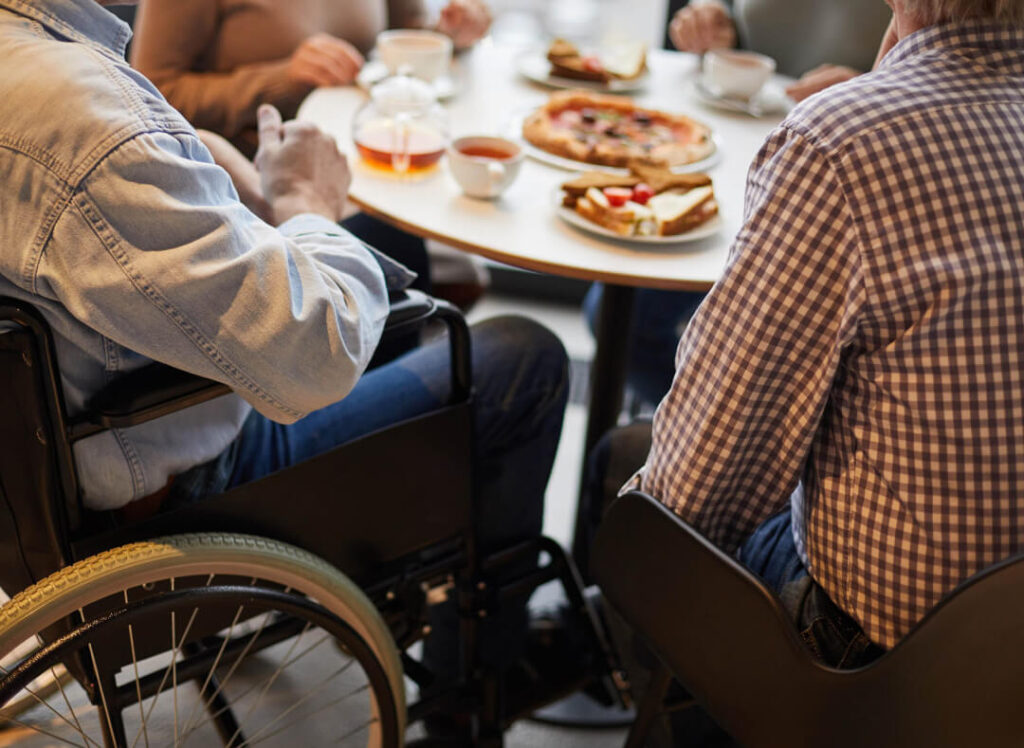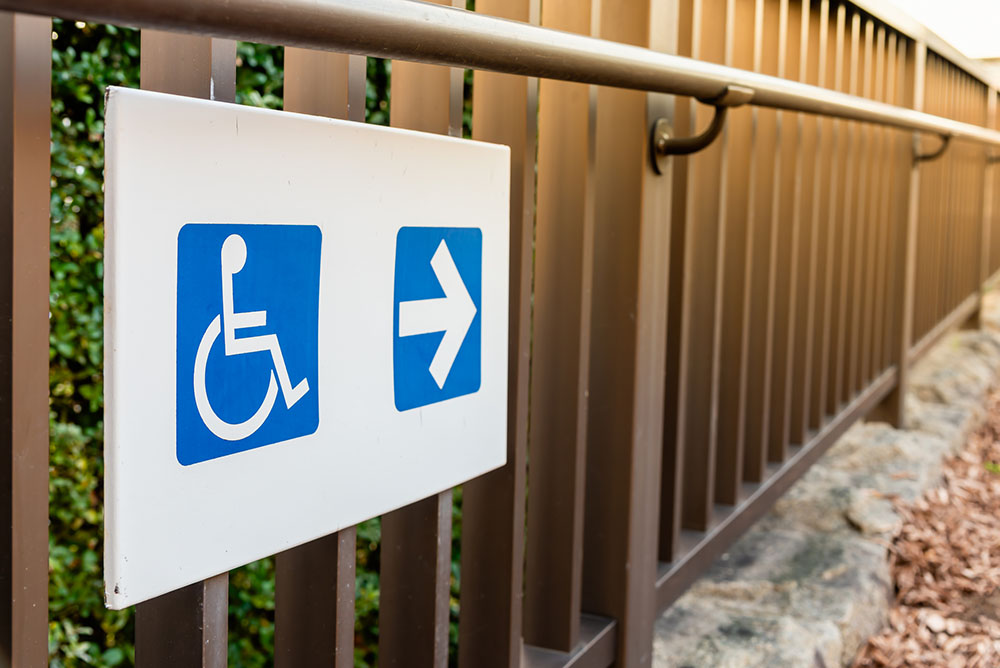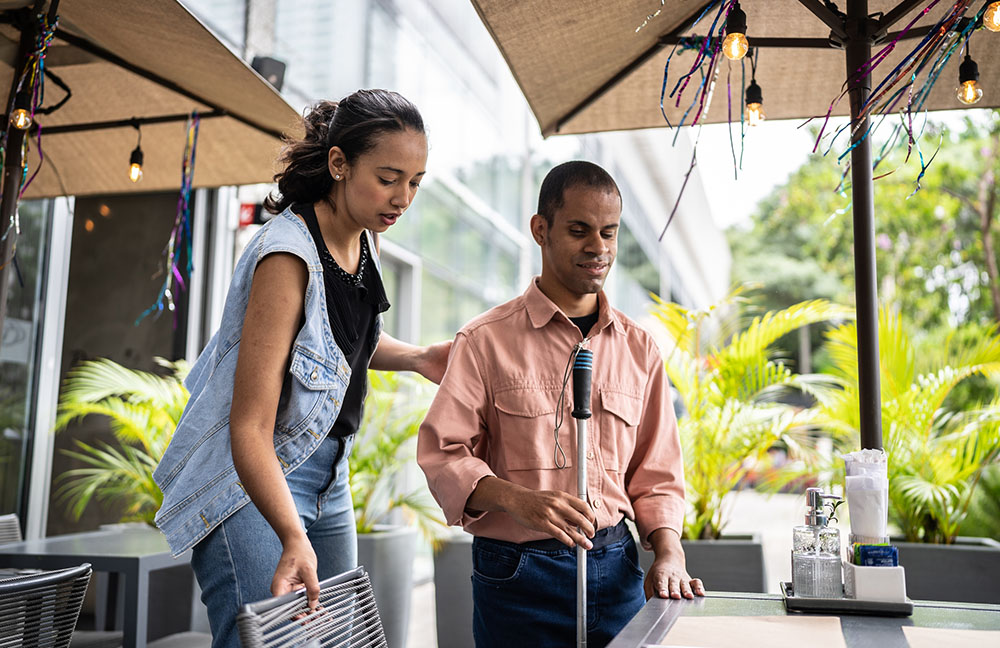ADA compliance requirements for restaurants
Guaranteeing your venue is Americans with Disability Act (ADA) accessible should be high on your restaurant’s priority list. Learn more about what standards you need to uphold and how to go about doing so. Because the joy of experiencing a great meal in a beautiful restaurant is something everyone should be able to comfortably have.
A brief overview of the ADA
The Americans with Disabilities (ADA) of 1990 is a federal law enacted in 1990 that prohibits discrimination against individuals with disabilities. Title three of the ADA specifically addresses public accommodations, which includes restaurants.
It was enacted for various reasons. In fact, we could do an entire blog on its purpose. But for brevity’s sake, it was crafted to address the widespread discrimination and barriers faced by individuals with disabilities and act as guide to remove these barriers.

What are the key aspects of ADA compliance for restaurants?
1. Accessible entrances
It seems only appropriate the act begins with your venue’s entrance. Entrances must be accessible to individuals with disabilities. This includes having ramps adjacent to steps and ensuring doors have at least 32 inches clear width for wheelchair access.
2. Seating requirements
Your restaurant must provide accessible seating. This means having tables that can accommodate wheelchairs, with a clear floor space of at least 30 inches by 48 inches. At least 5% of seating must be accessible, but be no less than one table.
For example, if your restaurant has a small number of tables (e.g., fewer than 20), 5% of seating might be less than one table. If your venue has 40 tables, then at least two tables need to be wheelchair accessible, etc.
3. Clear paths of travel
You need to have an accessible path from your car park to the entrance of your venue. This path can be considered the sidewalk, a garden path or hallway. This path must be at least 36 inches wide.
This width measurement also applies within your venue. Here’s a tip: set up your tables and chairs, then push a stroller or wheelchair around the restaurant. If you can do this with ease, fantastic! If not, consider a change to your layout.
4. Restrooms
Your restrooms must be accessible and contain one accessible stall. An accessible stall includes features like:
- grab bars
- sufficient turning space for wheelchairs, and
- accessible sinks.
Alternatively, you could have an individual restroom designed with accessible features.

5. Other areas and things to consider
Parking facilities
If you provide parking or have a dedicated parking lot, there must be accessible parking spaces. This includes both regular accessible spaces and van-accessible spaces. They should be located closest to the accessible entrance.
Signage
Clear and visible signage for accessible areas, including restrooms, should be provided. These signs should have Braille and raised text for visually impaired individuals.
If you have the resources, menus printed in Braille can have a huge impact for visually impaired customers. Be mindful that not every visually impaired person can read Braille, though. Otherwise, if you currently use tablet menus, consider software that provides vocal descriptions of your menu’s items.
Service counter height
Your venues service counter (where orders are placed or where customers pick up food) should be accessible to individuals using wheelchairs. At the minimum, it must have a section of the counter that’s lowered to 36 inches or less.
Let’s say you have a coffee shop, the main counter might be at a standard height, but a section near the register is lower. Customers in wheelchairs can use this lower section to place their orders, pay, and receive their food or drinks.
What are the consequences of non-compliance?
Everybody has a right to a great dining experience, including people with disabilities. Failure to meet the ADA compliance can result in a number of detrimental effects to your business. These include:
- Lawsuits: People with disabilities or advocacy groups may bring legal action against you and your business for non-compliance. This can result in costly legal battles and potential damages.
- Fines: The Department of Justice (DOJ) can impose fines for ADA violations. Initial fines can be up to $75,000 with subsequent violations potentially costing up to $150,000.
- Damage to reputation: Unsurprisingly, non-compliance can harm your restaurant’s reputation, leading to loss of customers and negative publicity.
Steps for ADA compliance for restaurants
Conduct an ADA audit
Hire a professional to inspect your restaurant and identify areas that need changes to meet ADA requirements. This audit will pinpoint specific accessibility issues.
For example, the audit may find your restrooms are without grab bars. You’ll need to install them at the correct height and location to make the restrooms accessible.
Make necessary modifications
Based on the audit, make the required changes. This could include:
- installing ramps
- widening doorways
- rearranging furniture for better access, and
- modifying restrooms to be wheelchair accessible.
Using a digital compliance checklist helps you and your team keep track of any required changes to your restaurant’s layout.

Train your staff
Staff training should cover:
- ADA compliance for restaurants.
- Proper etiquette for interacting with customers with disabilities.
- Procedures for assisting with common needs, such as guiding a visually impaired customer.
Make sure you train your staff to recognize service animals and understand their role. This way they know these animals are allowed in all areas where customers are permitted.
It helps to have a centralized workforce training software for all of your staff to access. Here you can update the material accordingly to meet the evolving needs of your customer base.
Do regular maintenance checks
In a busy restaurant, things are bound to wear and tear. It’s important you and your staff make sure your accessibility features are functioning correctly. This includes:
- checking that ramps are not obstructed
- accessible restrooms are stocked and clean, and
- any automatic doors or lifts are operational.
Also, if you do have a dedicated parking lot, ensure the accessible parking signage is visible and the spaces are not blocked or used by non-disabled individuals.
Stay up to date with ADA requirements
It’s much easier to remain updated to the evolving needs of individuals with disabilities than you may think. You can:
- Subscribe to updates from ADA-related organizations or government websites.
- Attend workshops or seminars on ADA requirements.
- Consult with legal experts to ensure your practices remain complaint.
Make sure your restaurant’s website complies with ADA accessibility features. This can make it easy for all customers to navigate and access information online, especially if you take online orders or bookings.

Get customer feedback
Every restaurant’s greatest asset is its customers, alongside staff, of course. Actively seek feedback from customers with disabilities to identify any overlooked issues. This can be gained using comment cards, online surveys, or direct conversations.
For example, if a customer mentions the accessible restroom is difficult to find, improve signage to make it more visible and easier to locate. This feedback can provide valuable insights into areas needing improvement.
Operandio makes ADA compliance checks a breeze
Making sure you’ve ticked all your ADA requirement boxes may seem daunting, but it’s easy with Operandio checklist templates. We can also help you develop staff training modules to ensure they know how to respectfully interact with customers with disabilities. Book your free demo today.


